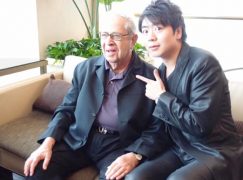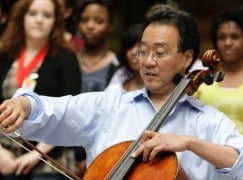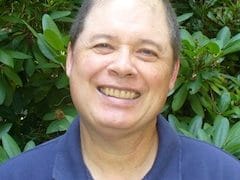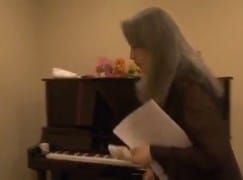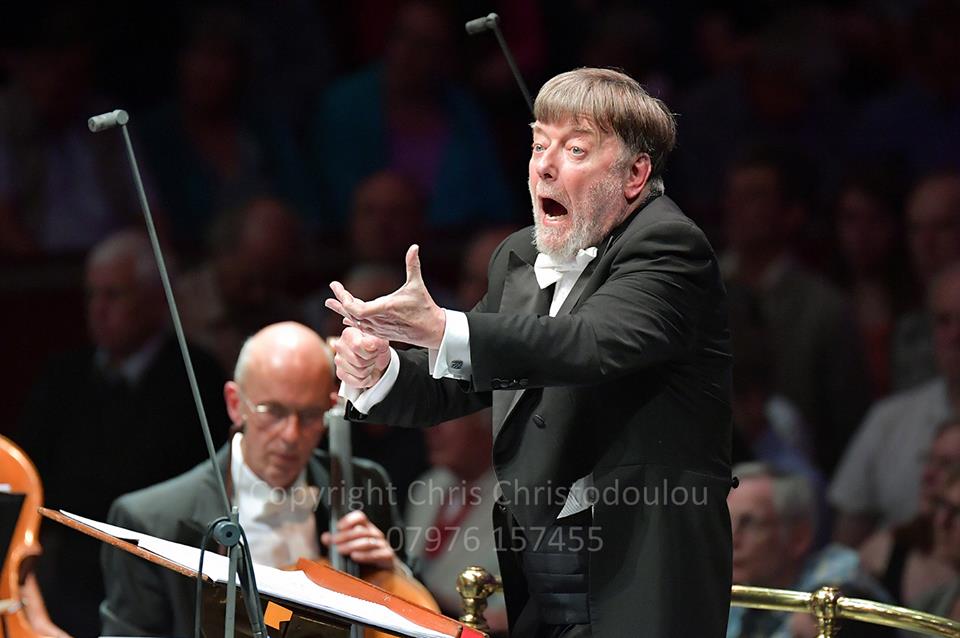The US pianist and former Curtis dirctor, gives a delightful interview on Facebook to his colleague, Donald Isler:
Interview With Gary Graffman
“I got many reviews from the New York Times; good ones, bad ones, mostly in-between ones” said Gary Graffman, reaching into the refrigerator, having offered me something to drink. “But the most read one was about my making different flavored vodkas. My Russian parents would put lemon peel in their vodka. Later I thought about this scientifically: How many lemons are involved (using only the yellow, not the white parts, as my mother taught me)? Then I experimented with lime, tangerine, ginger, pepper, dill, and horseradish. Now I have a large repertoire, with different citrus fruits, though I sometimes use kumquats just for the hell of it!”
Though this was my first in-person meeting with Graffman I did not feel I was meeting a complete stranger. Why? Because I recently reread his 1981 book “I Really Should Be Practicing,” which I first read when it was new. So I was not surprised to find that this man, who has had a storied concert career, counts Lang Lang and Yuja Wang among his students, has an extensive art collection, and lives in an elegant apartment across the street from Carnegie Hall, is down to earth and as unpretentious as can be. He told one great story after another, and never felt the need to “impress” a visitor.
One other part of his life which I find particularly impressive is that he had to rebuild his performing career with an entirely new repertoire in his early fifties, when the injury to his right hand, about which he was very public, left him unable to use it in concerts.
“How much left hand repertoire did you play before that?” I asked.
“Not a note” he said, “Not even the Ravel Concerto, or the two Scriabin pieces everyone plays.”
Gary Graffman, who will turn 90 in October, was born, and grew up on the Upper West Side of Manhattan. His father, the violinist, Vladimir Graffman, came here from Russia via Harbin, Shanghai, Los Angeles and Minneapolis, where he was concertmaster of that city’s orchestra. He received a letter from his professor, Leopold Auer, in Stockholm, informing him that Auer had gotten out of the Soviet Union, was planning to come to New York, and did he want to be his assistant? Though he was not Auer’s assistant for long, as Auer died after a short time, Vladimir Graffman had a long career as a violin teacher in New York, working with private students, and also teaching at Mannes College and the 92nd Street YMHA Music School.
The Graffman family spoke Russian at home. Gary’s parents decided that their three year old son might have some talent when they discovered him listening to bad violin students of his father in the next room, and calling out “Nyet! NYET!” So his father started him on the violin. This, however, led to disappointment for everyone.
“I still remember the terrible sounds I made on the violin” he said.
It was decided that he should take a year off from playing the violin and, meanwhile, take up an “easier” instrument – the piano. This, by contrast, went very well, and from ages four through seven he studied with Cosby Dansby Morris, whose husband, Howard Morris, was a composer.
When he was seven years old, Graffman auditioned for, and was accepted at the Curtis Institute in Philadelphia. It was quite unusual for a child that young to get in. Two other interesting facts concerning his audition:
1) It took place in the very same room in which he teaches today, and
2) He saw at the audition his idol, Josef Hofmann, and told him how happy he was to meet him. He did so in Russian, but used the informal way of addressing another person, not the formal version, which would be appropriate in speaking to an adult. Why? “I only spoke Russian with my family, so I didn’t know the other form” he said. Hofmann, he believes, was amused.
Though he was now a Curtis student, he remained in New York, and had lessons at his teacher’s apartment, just a few blocks away from the Graffmans. He had already known her as a friend of his parents (and called her Aunt Bella, in Russian), but she was otherwise known as the famed, and feared Isabella Vengerova. A student of Leschetizky and Essipova, she was already a young faculty member of the St. Petersburg Conservatory when Vladimir Graffman was a student there. She was Gary’s teacher for the next ten years, stressed beautiful sound, and indeed, played with a lovely tone whenever she demonstrated at the piano.
She was very strict, and often Gary would arrive home from his lesson to find his father already on the phone with her, as she complained about his not practicing enough.
And she had a temper.
Once, he remembered, she picked up a chair and slammed it down on the floor so hard that a leg broke off, and her cat, Smokey, screamed, and hid under a couch for a long time (!).
“Could one deal with students this way today?” I asked him.
“No!” he said. “Nor could a violin teacher hit students on the head with his bow, as Auer sometimes did. He never really hurt them, but…………………..”
A well-rounded education was important to his parents, so he attended the Columbia Grammar School.
Many, many musicians were friends of the Graffman family and visited in their home. Heifetz came to see them when he visited the East Coast to play concerts. Mischa Elman who lived a few blocks away, visited often, usually to complain about Heifetz having so many more concerts than he. Prokofiev was a friend, and exact contemporary of Vladimir Graffman at the St. Petersburg Conservatory. He visited them when he came to America in the 30’s to play his Third Piano Concerto. “Somewhere I have a letter from him” said Graffman. Another frequent visitor was the pianist, Simon Barere.
As a result of the Russian Revolution, and Hitler, New York, when he was growing up, had musicians from more varied backgrounds than would otherwise have been the case. “The four biggest influences on me then were Horowitz, Rubinstein, Schnabel and Serkin” he said. His close friends included Eugene Istomin, a Serkin student, and Leon Fleisher, a Schnabel student. Graffman attended many, many concerts, and absorbed ideas from these concerts, as well as from his friends, and their teachers.
As a winner of the Leventritt Competition while still young, Graffman was in demand from the start of his career. “I played 100 concerts a year from age 20 to age 50” he said.
“How did you come to work with Horowitz?” I wondered.
“Horowitz was a friend of Vengerova. In those days many orchestras had broadcasts of their concerts. He had heard me on the radio and said he’d be delighted to hear me play. So she gave me his phone number.”
“What was that experience like?” I asked.
“It worked out that I played for him about once a week for a year, and then about once a month for three or four years after that. But although I only saw him once a week, or later, once a month, I was supposed to call him every day at 6:05 PM. He didn’t want to miss the five minute news broadcast at 6 on WQXR. As this was early in his twelve year retirement from the stage, and he hardly went out, he wanted to hear about all the concerts I was attending, and know the gossip about everyone.
“I now realize that Horowitz influenced the way I still teach today. He would sometimes tell me when he thought I was on the wrong track. But mostly, he would criticize me on the basis of what he thought I was aiming for, but not completely achieving; how I could make it better, but MY WAY, not his. He didn’t want to be copied. He would ask me, for example, with the second theme of the Chopin G Minor Ballade, ‘If you were a singer, where would you breathe?’ Or ‘Where would a stringed instrument change bows?”‘
After that, Horowitz usually played for him. Though not giving concerts at the time, Horowitz’s record company wanted him to make records. “He played many Clementi sonatas for me and perhaps 50 Scarlatti sonatas!
“Once he asked me ‘Do you know the Scriabin Eighth Sonata?’
“No, not the Eighth” said Graffman.
“You know, I can’t really play anymore” teased Horowitz.
Continued Graffman “He then put the music in front of him, never looked at it, and played it. It was fantastic!”
Largely because he was so busy giving concerts for many years, Gary Graffman did almost no teaching till he was in his fifties, and dealing with his hand problem. One exception to this, who studied with him earlier, was the pianist, Lydia Artymiw, whose talent impressed him.
Joseph Polisi, then Dean of Manhattan School of Music, invited him to teach at that conservatory, and he did so, from 1981 till 1986. “Many of those students were from Curtis” he told me “as Curtis didn’t (and still doesn’t) offer a Master’s degree.”
Two months after he started teaching at Manhattan School of Music, John de Lancie, the Director of Curtis, asked him to come and teach there, although the school year had already started, and all the piano students had teachers.
“Then why didn’t you wait to ask me till next year?” asked Graffman.
“So you don’t go to Juilliard!” was the answer.
It was decided that, like a doctor, Graffman would spend that year giving “second opinions.” He went to Philadelphia every week or two to hear a group of students, which meant that he heard each one at approximately six week intervals. Naturally, he was delighted to be teaching at his alma mater, where the faculty at the time included such people as Jorge Bolet and Mieczyslaw Horszowski.
Beginning the following year he had his own students. From 1986 till 2006 Graffman was Director of Curtis. During that time he and his wife had an apartment in Philadelphia within easy walking distance of Curtis, and spent half of the week there, and half in their New York apartment (where they have now lived for 53 years). During that time he reduced his teaching load to just two or three students. This increased again after he left that position, and he now goes to Curtis every other week to see about eight students. He also does master classes.
Gary Graffman has certain interesting ideas about organizing lessons.
One, is that an hour lesson is inadequate to work profitably with a student on that level. As he put it:
“A student arrives at 2 o’clock for a one hour lesson with a Beethoven sonata. By the time you greet him, ask ‘How are you,? ‘Is your father feeling better,?’ etc. it’s 2:05. Then he plays the sonata, which takes until 2:35. Then you start to work with him on it, and by 3 o’clock you’ve only reached the development of the first movement. It’s ridiculous!”
Thus, he always schedules two hour lessons.
Another innovation is that, as Director, he decided that all twelve through sixteen year olds should have twice as many lessons (60 hours per year, rather than 30) as before. They need, and deserve that much attention, he said.
This, however, means that some students are shared by two teachers. And that can be touchy, as some teachers don’t want their students playing for anyone else on a regular basis. I was interested to learn that this is no longer frowned upon some years ago when I heard that a young pianist I knew was studying at Juilliard with two big name teachers, Jerome Lowenthal and Seymour Lipkin. In an interview I did last year with Lowenthal, he told me he has absolutely no problem with this kind of thing. Neither does Graffman.
But this reminded Graffman of a story from years ago which, he insisted, was not a joke. The story goes as follows:
Student enters an elevator at Juilliard and sees Graffman’s friend, Jacob Lateiner, who is not her teacher.
Student: “Hello, Professor Lateiner.”
Lateiner: “Oh, hello! How are you? And what are you playing these days?”
Student: “I’m playing the Wanderer Fantasy.”
Lateiner: “Well, good luck with your Wanderer! I hope to hear it sometime!”
Teacher of said student later that day, raging over the phone at Lateiner: “What the hell are you doing, talking to my student???”
I wondered if Gary Graffman ever plays for his students during lessons? He says that sometimes he does.
“If I play a bunch of wrong notes because my right hand clamps up, so what? But sometimes I just demonstrate with the left hand.”
When discussing the level of the brilliant young pianists of today with those of earlier years, he said that, when they were students “Yuja, Lang Lang and many others were technically way ahead of where Leon, Eugene and I were at their ages.”
He has done an enormous amount of travelling, usually in the company of his wife, for concerts, and to pursue his great interest in Asian art. (When he began to have hand problems, and wasn’t sure if he would be able to continue playing, he took post graduate courses at Columbia University in Chinese, Japanese and Indian art history.) And he told the US State Department he was available to play in out of the way places around the globe. He played in Katmandu, Nepal, for example, because he was interested to see it.
I heard many stories of the Graffmans’ adventures. Their travels included forty visits to China, and many more to Hong Kong. “I’ve been to every country in Asia except Bangladesh, Bhutan and Mongolia” he said. (This is in addition, of course, to trips to Europe, South America, Australia and New Zealand.)
On one trip, in the 70’s, he played in Pakistan. The Graffmans were then driven to the Afghanistan border by a taxi driver who turned them over to his cousin on the other side of the border. The cousin drove them over the Khyber Pass, to see ruins that interested them, and then to Kabul, where he was to play. While there, he introduced the American ambassador to the newly arrived Russian ambassador. At that time there was no danger being in Afghanistan.
By contrast, an earlier trip, which began in Turkey, and was later to take them to India, was much more dramatic. They arrived in Beirut unaware that an insurrection was going on. Their friend, the Cypriot composer, Anis Fuleihan, whom they knew from Tanglewood, told them not to leave their hotel, and arrived the next morning to drive them to what was left of the American Embassy. (It had been burned down.) The Americans left in charge there wanted the Graffmans out of the country immediately, for their safety, and planned to put them on an Air Iraq flight to Baghdad.
“Um, you know we’re Jewish” Graffman told them. “Will that be a problem?”
Problem or not, they were flown to Baghdad, where they settled into a very fine hotel. They engaged a driver to take them from Baghdad, on the Tigris River, to Babylon, on the Euphrates. In Babylon they encountered thousands of ancient artifacts lying on the ground, unguarded. They then flew on to India.
Five days later, they read that the King of Iraq and the pro-western foreign minister had been murdered, and that European guests in Baghdad were being dragged out of their hotels.
Getting back to music:
I asked Gary Graffman if he likes to listen to his own recordings? “Never” he said. “Sometimes when I was going to rerecord something I’d done before I’d listen to the first recording. But not now.”
I couldn’t resist asking if he sometimes thinks of updating “I Really Should Be Practicing” or rewriting it?
“I’ve been asked to do that several times, but I don’t think I will.”
The visit concluded with his writing a gracious autograph in my more than 35 year old copy of his book.
Donald Isler
